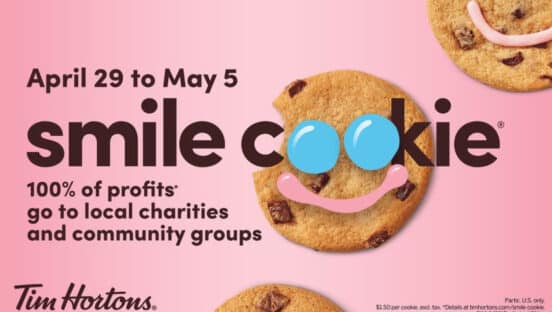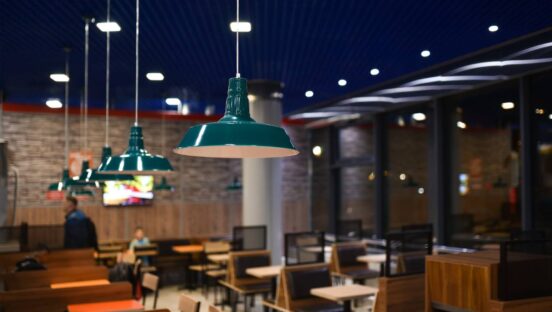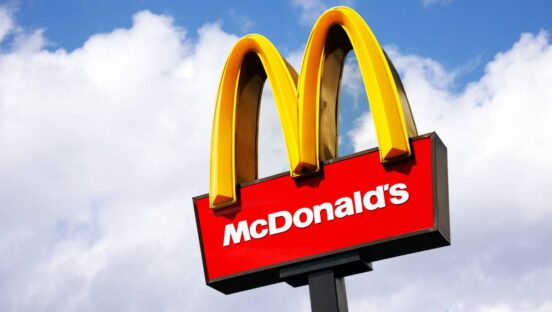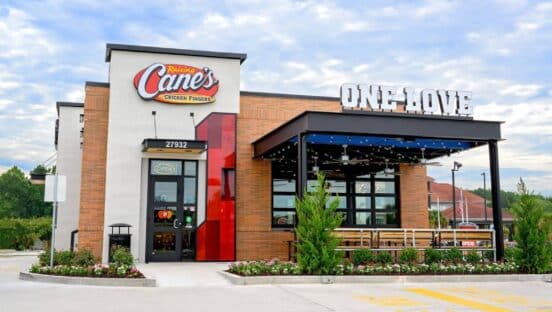Well before a pandemic crashed our daily lives, restaurants had a significant labor challenge at hand. Chipotle chief restaurant officer Scott Boatwright called it the “talent crisis.” Darden CEO Gene Lee labeled it “the war for talent.” The sentiment was the same. Unemployment rates of 3.5 percent—the lowest in five decades—coupled with rising wage rates across the country, made it increasingly difficult to fully staff restaurants. Quick-serves, in particular, began to look at automation and digital as a solution. But the reality was recruitment and retention roadblocked growth just as much as an oversaturated landscape did, one where restaurants started to grow at twice the rate of the population.
From 2010–2017, restaurants accounted for one out of every seven new jobs, according to The Wall Street Journal.
Just in New York City, according to a report released Thursday by State Comptroller Thomas P. DiNapoli, the net number of restaurants and bars increased by more than 7,000 from 2009 to 2019 to reach 23,650. It marked a net increase of 44 percent, more than double the rate of growth of businesses citywide (19 percent). Employment in the industry also grew much faster than total private sector employment. Since 2009, more than 120,000 restaurant jobs were added to reach 317,800 last year, a 61 percent increase and double the growth rate for total employment (30 percent).
Yet as this unfolded, the nature of the labor market changed. Ahead of COVID, the number of restaurant employees between the ages of 16 and 19 years old ticked up to pre-2007 levels, right before the financial crisis, per CNBC. However, the labor force participation rate of teens had stagnated going on four years. Restaurants pulled from other industries, like retail, which was plagued by closures over the past decade. The Department of Labor’s Bureau of Labor Statistics found 1.7 million teens worked in restaurants in 2018—the same number as 2007. You have to also factor that over past decade, according to the BLS, the number of restaurants jumped close to 16 percent.
So one way to illustrate the “talent crisis,” is the notion there were too many restaurants, massive job growth, and yet the same number of teenage employees in the industry as 2007. Simply, one of the sector’s consistent labor pools was drying up to some extent. On a broader level, 41.3 percent of teens held a job in 2007. Two years ago, it was 35.1 percent. The force hasn’t rebounded since the recession and more young people are working on college resumes than trying to line their pockets with spending money. It’s why the BLS predicted the number of teenagers in the labor force to drop by 600,000 during a decade-long span ending in 2026.
Teens used to outnumber adults aged 55 years or older in the restaurant industry 3 to 1. It was 2 to 1 before COVID. And that older demographic rose by 70 percent between 2007–2018.
This all put restaurants in a challenging spot. Triple-digit turnover rates and cyclical seasonal hiring often speak to a younger population looking for flexibility. But pre-COVID, there were fewer people to recruit compared to a decade ago despite there being more jobs and restaurants.
Thus, a “war for talent” to find not just workers, but capable employees who could represent a brand’s ethos and separate it from the sterile third-party options.
While unemployment has recovered of late to 8.4 percent in recent reports, it’s still undeniably a much wider pool. The BLS released its September jobs report Friday morning, showing that 2.3 million jobs have been lost by the food and beverage industry since February—more than any other industry. After adding 200,000 jobs, the industry now employs a touch under 10 million. Even with upward movement, it’s 2 million-plus less than pre-COVID levels.
From March 9–15 (the week before the crisis), according to industry management platform Restaurant365, the 5,700 restaurants indexed by the company employed a total of 695,224 employees with 4,680,188 labor hours. That dropped to less than 300,000 and 1,807,971, respectively, the following week when dining rooms closed. The next four weeks flattened at less than 200,000 employees and roughly 1.2 million in labor hours each week during the trough of COVID closures. So you’re talking a decrease of about 75 percent of restaurant employees and 75.7 percent in total hours.
By August 2020, using NYC as an example again, employment in the industry was only 55 percent of February levels.
According to a survey by Restaurant365, 28.4 percent of operators said they still employ 81–100 percent of their pre-COVID employees.
But, of course, it isn’t so cut-and-dry as there being more people looking for work. One element of the “talent crisis” was restaurants paying more attention to staffing beyond just cutting checks. Offering work-life balance perks, college education, career advancement paths, community involvement and sustainability practices, and, naturally, higher wages.
READ MORE: Is flexible self-scheduling an answer?
In a COVID arena, this hasn’t gone away. In fact, it’s been compounded by the ability to earn $600 extra per week on unemployment—a dynamic that gave some minimum-wage workers 270 percent more, on average, than they made working at a restaurant. In NYC, the average restaurant employee salary was less than $28,320 in all boroughs except Manhattan.
While this $600 benefit expired in July, it could return in the next stimulus (if one is passed), as outlined by a recent Heroes Act proposal.
Yet even if it didn’t come back, restaurants are trying to convince employees to return to the fray. It’s a much different scenario than before, and it carries its own challenges. There’s a good chance furloughed workers left for other industries over the last six-plus months, or the competition. Or they simply want to wait it out a little longer at home.
In a survey conducted by Restaurant365, staff was mentioned as the top challenge by many restaurants. When asked how to solve the COVID-hiring dilemma, a full-service operator simply said, “overpaying.” Another provided extra pay for tipped employees at crisis’ onset.
According to the survey, 28.4 percent of operators said they still employ 81–100 percent of their pre-COVID employees, suggesting a good deal did come back. However, 17.28 percent said they only employ up to 20 percent of their pre-virus workers. And a total of 49.38 percent of respondents employ up to 60 percent (including the 17.28 percent with up to 20 percent), with 12.35 percent staffing 21–40 percent, and 19.75 percent employing 41–60 percent.
A lot of employees, like customers, remain reluctant to balance personal safety with wages. From a study by Branch, despite a loss of income, over half of employees (53 percent) were hesitant or declined to apply to new jobs due to fear of exposure.
That’s something new restaurants have to write into the recruiting playbook. Desmond Lim, founder and CEO of Workstream, says it starts with reconsidering the basics. For one, employees don’t want to conduct in-person interviews anymore. “Video interviews not only make it easier for prospective employees, but it shows that a company prioritizes safety from the very start of the relationship,” he says. A Workstream survey showed that over 93 percent of hiring managers easily adopted virtual interview technology, and 50 of even preferred it over traditional phone interviews.
Long-term security isn’t as powerful a lure for restaurants as it is other industries. Especially when you consider about 40 percent of employees in restaurants and bars work part time, which is more than twice the proportion for all other industries.
MyWorkChoice data found 75 of of hourly employees want flexibility to choose when and how much to work. “Keep in mind, hourly workers need to account for times of illness, quarantine, arranging childcare, and more. Absenteeism was already a problem for hourly workers, and that has only surged during COVID-19,” Lim says. “Businesses that can provide more shift flexibility will continue to be extremely attractive to today’s hourly workers, who value having more autonomy and choice when it comes to working during a pandemic.”
On a tech front, the same survey suggested 70 percent of of workers want the ability to communicate and schedule shifts via a mobile device.
Paid sick leave has become a key selling point for hourly employees to consider a new job offer, and employers know it, Lim adds. According to the Branch survey, 38 percent of of employers included paid sick leave as a form of financial assistance for hourly employees. This tops even bonus pay (26 percent).
“When only 51 percent of lower-wage workers had access to paid sick leave before the pandemic,” Lim says. “it’s not surprising that it’s even more important to hourly workers during COVID-19. Having this safety-net makes coming into work that much easier of a decision.”
In sum, the “war for talent,” or the “talent crisis,” generally, has not vanished because there are more workers to choose from. The stakes are as high as ever, and the brands that figure it out will be poised to grow on the other side of COVID—just like they were before.

Yum!’s blueprint
Yum! Brands recently released its annual Global Citizenship & Sustainability Report. In it, the Taco Bell, Pizza Hut, KFC, and Habit Grill owner shared some employee-level updates and how it’s investing in “social purpose to unlock opportunity in our people and communities, while championing equity, inclusion, and belonging across all aspects of our brands and franchise business.” The company employs some 1.6 million.
Let’s start in March. Yum! acquired the Heartstyles company after years of partnership. While this deal wasn’t as sexy as acquiring a brand (like Habit in earlier in the year) might be, it gave Yum! a leadership development program to shore up talent from within. One of the most underappreciated statistics in the restaurant industry is that nine out of 10 managers and eight out of 10 owners started their careers in entry-level positions, according to the National Restaurant Association. One way to slow turnover is to provide hourly employees a visible career ladder to reach for.
Also from the Association, 37 percent of operators in quick service listed recruiting and retaining employees as their No. 1 challenge in 2020. This was before a global pandemic hit.
READ MORE: How Yum! beat the COVID odds, and got better because of it
Yum!’s goal is to spread Heartstyles, created by married couple Stephen and Mara Klemich, to the 2,000-plus franchisees that run 98 percent of its 50,000 restaurants. The primary feature of the program is a “Heartstyles Indicator,” which is an online self-assessment tool that analyzes key personality behaviors and identifies how one can grow.
It essentially gives employees an action plan to figure out how they want to develop, and where to go from there.
And part of the building-from-within mentality centers on diversity and fresh ideas. Yum! was a founding member of the Women’s Foodservice Forum in 1999 and has since established female mentoring programs for restaurant GMs alongside leadership coaching.
In 2019, Yum! announced 40 percent of its global leadership positioned was now led by women. The company made more progress in a two-years window than the previous decade.
Last year, Yum! also introduced a “Lead it Forward” agenda that brought together its top 75 women executives to network and “share know-how on strengthening equity and inclusion broadly and female advancement in their home countries. We now have a growing movement of world-class programs advancing women and creating more inclusive cultures in places such as Asia, Russia, Australia, Europe, and the U.S.,” chief transformation and people officer Tracy Skeans said in the report.
More recently, Yum! unveiled an “Unlocking Opportunity Initiative” with an investment of $100 million over five years ($50 million of which was funded in Q2 of this fiscal year) to fight inequality for frontline restaurant teams and communities around the globe, with a focus on equity and inclusion, education, and entrepreneurship. A response to the racial tumult of the last few months.
The company set five goals:
- Increase representation of Black, Latinx, and female associates among executive and management ranks, franchisees, and suppliers.
- Continue to roll out inclusive leadership and anti-racism training across the system, including company and franchise restaurants.
- Partner with U.S. franchisees on implementing the Unlocking Opportunity Initiative, and leverage and expand involvement in Yum!’s inclusion advisory group, called the Leading Inclusion for Today and Tomorrow (LIFT) Council.
- Increase Black, Latinx, and other diverse representation across teams and in U.S. corporate leadership and agency account teams.
- Invest in entrepreneurship, education and social justice in communities that have been historically marginalized and cities where our corporate offices are located.
As noted before, what a restaurant stands for is critical in today’s hiring environment. It was before COVID, especially among Gen Z, and it still is now. Young workers aren’t looking for a job just to have a job like they once did. They want to find their place and people.
On June 25, Yum! expanded its “Recipe for Good” efforts and announced a new social purpose (relating back to the $100 million investment).
Yum! points out the new social purpose unlocks opportunities for frontline employees and communities. This includes expanding access and funding of education and skills training to empower employees and give them a reason to pick Yum!, no matter if it’s a stepping stone or not.
On this note, it plans to “create pathways to entrepreneurship for restaurant employees wanting to lead a business, franchise or social enterprise, as well as for small businesses and social entrepreneurs looking to make a meaningful difference in their communities.”
Yum!’s brands donated more than $66 million in 2019.
KFC: The Add Hope program in South Africa, and partnership with Blessings in a Backpack in the U.S., which kept children fed during school closures in 2020.
Pizza Hut: Expanded its support of First Book’s Stories for All Project, a collection of diverse books and educational resources that reflect myriad experiences, cultures and communities. Additionally, Pizza Hut International invested in RGMs around the world through scholarships for continued education.
Taco Bell: Launched “Round Up,” where customers are encouraged to round up their order total to the nearest dollar, with the extra change being donated to the Taco Bell Foundation and No Kid Hungry. This raised $30 million since its 2019 inception.
The Yum! foundation expanded from providing domestic employee matching gifts and disaster relief to international support last year. The broader focus was key during COVID, the company said. For instance, in response to racial issues, the Foundation pledged $3 million to advance equality and social justice, $1 million of which will go to community organizations identified with input from GMs across the U.S. In just Louisville—where Yum! is based—the company partners with three community partners: Dare to Care, Metro United Way. and Fund for the Arts—with a focus on lifting Black voices.
[image source_ID=”128302″]
COVID and a status update
Here are some of the things Yum! did for employees during the crisis. Why is this critical? If you’re going to ask past employees to come back or convince new ones to join, there needs to be evidence as well as framework that they’ll be safe.
For impacted employees:
- Global Medical Relief Fund for restaurant team members and family members diagnosed with COVID-19
- One-time $1,000 bonuses for nearly 1,200 GMs at company-owned stores
- One-time bonuses for employees at company-owned stores
- Paid leave for corporate employees unable to work
Opening safety
- Low-contact options including delivery, drive-thru and curbside pickup
- Contactless delivery through its own and third-party services
- Temperature checks and counter shields for increased safety
- Plexiglass on the front counter and cleaning captains in the dining room to make sure units clean high-touch points every 30 minutes
For franchisees
- Global Franchise Health and COVID-19 Support Team for business continuity
- Capital assistance and grace periods for payments
Giving back
- Hundreds of thousands of meals donated to food banks, healthcare workers and other essential personnel
- Books and other educational resources for students without access to these items at home
How is Yum! faring on these fronts?
In 2019, the company created an enhanced global employee engaged survey. It found a 90 percent engagement level. Yum! outperformed benchmarked companies with engagement among workers in the 95th percentile, it said.
More than 33,000 Yum! employees participated in training programs in 2019, including its Heartstyle offering, unconscious bias programs, inclusive leadership, as well as on compliance policies. The company’s “Code of Conduct” boasted more than two million corporate training hours logged.
To further boost diversity, Yum! joined We Are All Human’s Hispanic Promise, a national pledge to hire, promote, retain and celebrate Hispanics in the workplace.
The company tracked about 140,000 hours of training on issues related to human rights policies and the ethical treatment of workers within its system. Yum! said. It also established global membership with Sedex, a leading ethical trade membership organizations that works with business to improve working conditions in global supply chains, to further strengthen existing supply chain auditing capabilities, with focus on human rights and labor practices.
“More than a year ago, we began our journey listening to outside stakeholders and interviewing leaders across the business,” the company said. “We heard a common theme: the importance of investing in people. Our 2,000 franchisees employ most of the more than 1.6 million people worldwide working for our brands, and their businesses help support thousands of local economies. Therefore, we’ve built a social purpose framework around unlocking opportunity for frontline restaurant team members and communities by increasing access to ingredients for a positive future—equity and inclusion, education and entrepreneurship.”










